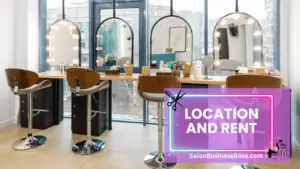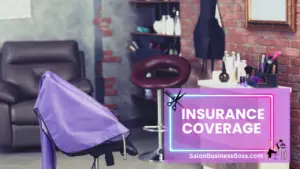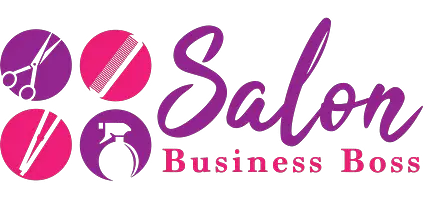Starting a hair salon can be an exciting venture, but it’s essential to be well-prepared for the costs involved. Hair salon start-up costs can vary significantly depending on factors such as location, size, services offered, and the level of sophistication desired.
Hair salon start-up costs can vary from $2,000 to $800,000, depending on factors like location, equipment, staff, and marketing expenses. A well-planned budget and understanding of these costs are crucial for a successful salon venture.
1. Location and Rent (Average cost: $30,000 – $150,000)

The location of a hair salon is a critical factor that can significantly impact its success. Choosing the right location involves considering various factors, such as accessibility, visibility, and the target market’s demographics. Urban centers often attract higher foot traffic and potential customers, making them prime locations for a salon. However, such areas typically come with higher rental costs due to the demand for commercial spaces.
On the other hand, suburban or rural areas might offer more affordable leasing or purchasing options, but they may have lower population density and limited exposure. It’s essential to strike a balance between visibility and affordability while keeping the target customer base in mind.
When calculating the initial expenses, salon owners must consider additional costs beyond the basic rent. These may include security deposits required by landlords, utility connections for electricity, water, and gas, as well as potential property modifications to create a salon-friendly layout. Renovations or interior design improvements might be necessary to ensure the space aligns with the salon’s aesthetic and functionality.
A well-chosen location that aligns with the salon’s target market and budget can help attract more customers and boost revenue. It’s crucial to conduct thorough research and consider the long-term potential of the selected location to make an informed decision that sets the stage for the salon’s success in the competitive beauty industry.
Read more about: Setting Up a Hair Salon: Practices and Strategies
2. Salon Equipment and Furniture (Average cost: $10,000 – $50,000)
Creating a professional and inviting atmosphere is crucial for any hair salon, as it directly influences the overall customer experience and satisfaction. High-quality salon equipment and furniture play a pivotal role in achieving this goal. Styling chairs are the focal point of any salon, where clients spend a significant amount of time during their visits. Opting for comfortable and adjustable chairs not only improves the client’s comfort but also allows stylists to work efficiently.
Shampoo stations are another essential component, and investing in comfortable and well-designed units can turn a simple hair wash into a relaxing spa-like experience for customers. Hair dryers with advanced features ensure efficient and quick drying while maintaining hair health.
Reception desks serve as the first point of contact for clients, making it essential to invest in a stylish and organized desk to create a positive first impression. Mirrors are a fundamental element of any salon, as they allow customers to see the results of the services and provide a sense of reassurance.
Furthermore, a well-designed and comfortable waiting area with suitable furniture helps clients feel relaxed and at ease while waiting for their appointment. Investing in ergonomic, stylish, and durable furnishings throughout the salon creates a cohesive and upscale ambiance that leaves a lasting impression on customers.
A professional and inviting atmosphere not only attracts and retains customers but also enhances the overall reputation of the salon. Satisfied clients are more likely to recommend the salon to others, leading to increased word-of-mouth referrals and business growth. Therefore, investing in high-quality salon equipment and furniture is a wise decision that yields long-term benefits for both the salon’s success and customer satisfaction.
3. Inventory and Products (Average cost: $5,000 – $20,000)
Stocking your hair salon with the right inventory is a crucial aspect of providing excellent services and catering to a diverse clientele. The inventory should include a comprehensive range of hair care products, hair color options, styling tools, hair extensions, and other essential supplies. Offering a diverse selection not only meets various customer needs but also positions the salon as a one-stop-shop for all hair-related services.
To optimize inventory costs, thorough research is essential. Identify reputable suppliers known for their quality products and competitive pricing. Consider negotiating bulk discounts or establishing long-term partnerships to secure better deals. Evaluating the demand for specific products can help prioritize stock quantities to avoid overstocking and potential wastage.
Constantly updating the inventory to include the latest hair care trends and innovations is essential in the competitive beauty industry. Regularly seeking customer feedback can provide valuable insights into their preferences and help tailor the inventory to their requirements.
4. Licensing and Permits (Average cost: $500 – $5,000)
Acquiring the necessary licenses and permits is a non-negotiable step in the process of establishing a hair salon. The cost of licensing may vary depending on the specific services the salon intends to offer and the location’s regulations.
Common permits required for a hair salon include business licenses, health department permits to ensure a hygienic environment, and cosmetology establishment licenses. These licenses not only demonstrate the salon’s compliance with local laws but also instill confidence in clients, assuring them that they are patronizing a legitimate and professionally run establishment.
Navigating the licensing process might involve paperwork and adherence to specific safety and sanitation standards. Hiring a professional consultant or seeking guidance from local authorities can facilitate the process and ensure compliance.
It’s crucial to factor in licensing and permit costs while budgeting for the salon’s start-up. Ensuring all legal requirements are met from the beginning helps prevent potential penalties or disruptions to operations in the future. By investing in the appropriate licenses and permits, salon owners lay the foundation for a reputable and successful business in the beauty industry.
5. Marketing and Advertising (Average cost: $1,000 – $10,000)

In the highly competitive beauty industry, a well-executed marketing strategy is crucial for a hair salon’s success. Allocating funds for marketing and advertising endeavors is an investment that can yield significant returns. A comprehensive marketing campaign helps build brand awareness, attract new customers, and retain existing ones.
One essential aspect of salon marketing is establishing a professional website that showcases the salon’s services, expertise, and customer testimonials. A user-friendly and visually appealing website can be a powerful tool in converting online visitors into actual clients.
Social media marketing plays a vital role in engaging with the target audience. Creating and maintaining active profiles on platforms like Instagram, Facebook, and Twitter allows the salon to share before-and-after pictures, hair care tips, and promotions, thereby building a loyal following.
Print materials like brochures, business cards, and flyers can be distributed locally to reach potential customers in the area. Eye-catching signage outside the salon can attract passersby and increase foot traffic.
Promotional offers and loyalty programs are effective in enticing new customers and encouraging repeat visits. Investing in well-thought-out promotions can lead to increased customer retention and word-of-mouth referrals.
Read more about: The Big Reveal: Grand Opening Ideas to Wow Your Hair Salon’s Guests
6. Staff Salaries and Training (Average cost: $10,000 – $80,000)
A well-trained and skilled team is the backbone of any successful hair salon. Budgeting for staff salaries, benefits, and ongoing training is essential for attracting and retaining top talent.
Experienced stylists are the primary drivers of customer satisfaction and loyalty. Compensating them competitively ensures their commitment to delivering high-quality services, which leads to satisfied clients who return regularly.
Support staff, such as receptionists and assistants, play a vital role in creating a positive customer experience. Investing in their salaries and training in customer service and salon operations helps maintain a smooth and efficient salon environment.
Additional costs to consider include payroll taxes and insurance contributions. Ensuring compliance with employment regulations not only protects the salon legally but also fosters a positive work culture that promotes employee satisfaction and loyalty.
Staff training should be an ongoing process to keep the team updated on the latest trends and techniques in the industry. Continued education enhances their skills, allows them to provide innovative services, and positions the salon as a leader in the beauty market.
Investing in staff salaries and training is an investment in the salon’s success and reputation. A satisfied and well-trained team reflects positively on the salon, leading to increased customer satisfaction and ultimately driving business growth.
7. Salon Software and POS System (Average cost: $500 – $5,000)
Investing in salon management software and a point-of-sale (POS) system is a strategic decision that can significantly enhance the overall efficiency and customer experience in a hair salon. These systems provide a wide range of benefits that streamline day-to-day operations and free up time for the salon staff to focus on delivering exceptional services.
Salon management software simplifies appointment scheduling, allowing clients to book services conveniently online or through mobile applications. The system helps minimize scheduling conflicts and no-shows while providing automated reminders to clients, reducing the likelihood of missed appointments.
Inventory management is another critical feature offered by such software. It helps track product usage, optimize stock levels, and streamline reordering processes, ensuring that the salon never runs out of essential supplies.
A POS system is vital for seamless payment processing and sales reporting. With a POS system, transactions become quick and efficient, reducing wait times for clients during checkout. Additionally, the system generates real-time reports on sales performance and revenue, providing valuable insights for decision-making and business growth.
When selecting salon software and a POS system, it’s essential to choose one that aligns with the salon’s unique needs and long-term growth plans. Scalability and compatibility with other business tools are vital considerations to ensure a smooth integration into the salon’s existing operations.
8. Renovations and Interior Design (Average cost: $5,000 – $50,000)
Salon Software and POS System (Average cost: $500 – $5,000)
Investing in salon management software and a point-of-sale (POS) system is a strategic decision that can significantly enhance the overall efficiency and customer experience in a hair salon. These systems provide a wide range of benefits that streamline day-to-day operations and free up time for the salon staff to focus on delivering exceptional services.
Salon management software simplifies appointment scheduling, allowing clients to book services conveniently online or through mobile applications. The system helps minimize scheduling conflicts and no-shows while providing automated reminders to clients, reducing the likelihood of missed appointments.
Inventory management is another critical feature offered by such software. It helps track product usage, optimize stock levels, and streamline reordering processes, ensuring that the salon never runs out of essential supplies.
A POS system is vital for seamless payment processing and sales reporting. With a POS system, transactions become quick and efficient, reducing wait times for clients during checkout. Additionally, the system generates real-time reports on sales performance and revenue, providing valuable insights for decision-making and business growth.
When selecting salon software and a POS system, it’s essential to choose one that aligns with the salon’s unique needs and long-term growth plans. Scalability and compatibility with other business tools are vital considerations to ensure a smooth integration into the salon’s existing operations.
Renovations and Interior Design (Average cost: $5,000 – $50,000)
Creating a visually appealing and functional salon space is crucial for attracting and retaining clients. Renovations and interior design services play a significant role in establishing a salon’s brand identity and atmosphere.
The cost of renovations and interior design can vary widely depending on the scope of the project, the size of the salon, and the materials used. Minor cosmetic changes, such as fresh paint and new furnishings, might fall on the lower end of the cost spectrum. On the other hand, extensive remodeling involving structural changes, premium materials, and custom designs may reach the higher end of the range.
When planning renovations, focus on providing a comfortable and trendy ambiance that aligns with the salon’s target audience. A well-designed layout with ample space for clients and staff enhances the salon’s flow and functionality.
The interior design should reflect the salon’s brand image, whether it’s modern and edgy or elegant and luxurious. Incorporating the right lighting, decor, and color schemes can create an inviting and inspiring atmosphere that leaves a lasting impression on clients.
Collaborating with a professional interior designer who understands the specific requirements of a hair salon can help optimize the space and create a unique and visually captivating environment.
9. Insurance Coverage (Average cost: $1,000 – $5,000)

Insurance coverage is a crucial aspect of safeguarding the salon against potential risks and liabilities. The cost of insurance coverage can vary based on factors such as the salon’s size, location, services offered, and the extent of coverage required.
General liability insurance protects the salon from third-party claims of bodily injury or property damage that may occur on the premises. Property insurance covers damages to the salon’s physical structure and assets in case of theft, fire, or natural disasters.
Worker’s compensation insurance is essential to provide financial support for salon employees in the event of work-related injuries or illnesses. This coverage not only protects the salon from potential legal liabilities but also shows a commitment to the well-being of the staff.
Professional liability insurance, often referred to as malpractice or errors and omissions insurance, offers protection against claims arising from professional negligence, errors, or omissions during salon services.
The specific insurance needs of a salon may vary, so it’s essential to work with an experienced insurance provider who can tailor coverage to the salon’s unique requirements. While insurance premiums add to the salon’s operating costs, the peace of mind and financial protection they provide are invaluable in mitigating potential risks and maintaining a secure business environment.
Read more about: Hair Salon Insurance Cost: Factors, Coverage, and Implications
Conclusion
Starting a hair salon involves careful planning and financial preparation. Whether you’re aiming for a more budget-friendly venture or an upscale salon with cutting-edge amenities, understanding the detailed breakdown of start-up costs will help you make informed decisions. Conduct thorough research, create a comprehensive budget, and explore financing options to ensure a successful and prosperous salon business. Remember, a well-executed plan and dedication to customer satisfaction are key factors in achieving long-term success in the hair salon industry.
Frequently Asked Questions

1. What are the key costs associated with hiring staff?
Factor in salaries, benefits, training, payroll taxes, and insurance contributions for the staff you plan to employ.
2. Do I need salon management software?
Yes, investing in salon software and a POS system can help streamline operations, appointments, inventory, and sales.
3. Should I budget for salon renovations and interior design?
Depending on the condition of the space, allocate around $5,000 to $50,000 for renovations and creating an inviting ambiance.
To learn more on how to start you own salon checkout my startup documents here.
Please note that the contents of this blog are for informational and entertainment purposes only and should not be construed as legal advice. Any action taken based on the information provided in this blog is solely at your own risk. Additionally, all images used in this blog are generated under the CC0 license of Creative Commons, which means they are free to use for any purpose without attribution.

About the author. Entrepreneur and Salon Business Fan.
Hi! I am Shawn and I am a happy individual who happens to be an entrepreneur. I have owned several types of businesses in my life from a coffee shop to an import and export business to an online review business plus a few more and now I create online salon business resources for those interested in starting new ventures. It’s demanding work but I love it. I do it for those passionate about their business and their goals. That’s why when I meet a salon business owner, I see myself. I know how hard the struggle is to retain clients, find good employees and keep the business growing all while trying to stay competitive.
That’s why I created Salon Business Boss: I want to help salon business owners like you build a thriving business that brings you endless joy and supports your ideal lifestyle.

